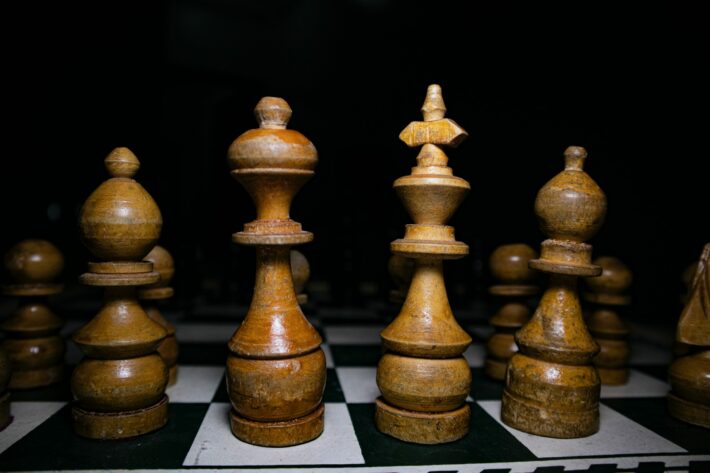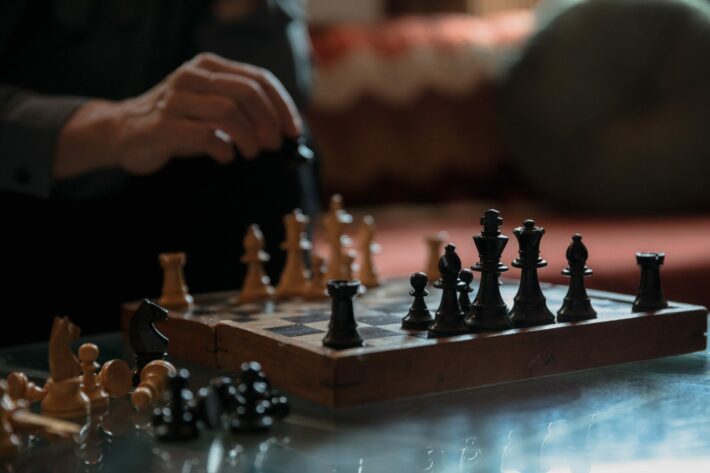In the game of chess, the bishops hold a unique position of power and versatility. Their long-range mobility along diagonal lines allows them to control key squares, launch devastating attacks, and support strategic maneuvers. Understanding how to effectively utilize bishops can significantly impact the outcome of a game, granting players a tactical advantage.
In this article, we will delve into the intricacies of unleashing the power of bishops, exploring various strategic maneuvers that can elevate your chess gameplay to new heights.
What are the key strategies for utilizing bishops in chess?
When it comes to utilizing bishops in chess, several key strategies can greatly enhance your gameplay. First and foremost, carefully position your bishops on open diagonals to maximize their influence on the board. Additionally, coordinate your bishops with other pieces to create powerful attacks, focusing on exploiting weaknesses in the opponent’s position.
Remember to guard key squares and prevent enemy infiltrations by strategically placing your bishops. Lastly, be mindful of trading off your opponent’s valuable pieces with your bishops to limit their attacking potential and gain an advantage in the game.
How can bishops contribute to a successful chess opening?

Bishops play a crucial role in the success of your chess opening. They possess great mobility and can rapidly establish a dominant presence on the board. By deploying your bishops strategically, you can control key central squares, build a solid pawn structure, and prepare for future development.
Bishops often complement each other, forming a powerful bishop pair that exerts substantial pressure on the opponent’s position. Incorporate your bishops into your opening plans, focus on rapid development, and capitalize on their ability to influence the game from the early stages.
What are the advantages of positioning bishops strategically on the board?
The strategic positioning of bishops offers several advantages in chess. By placing them on open diagonals, bishops gain significant scope, allowing them to control multiple squares simultaneously. This control grants you the ability to dominate key areas of the board, restricting opponent’s piece movement and hindering their plans.
Furthermore, strategically positioned bishops can support the advancement of pawns, contribute to a strong defense, and even initiate powerful attacks. Utilize the flexibility of your bishops to their full potential and seize control of the board.
How can bishops be used to control important squares on the chessboard?
Controlling important squares on the chessboard is a key aspect of utilizing bishops effectively. By placing bishops on open diagonals, you can exert control over critical squares and influence the flow of the game. Bishops can create a web of influence, especially in the center of the board, where they target key squares and restrict the opponent’s peace movement.
Furthermore, bishops can be used strategically to occupy or threaten squares near the opponent’s king, putting pressure on their position and creating tactical opportunities. Master the art of square control with your bishops and gain a significant advantage in the game.
What are the best ways to coordinate bishops with other pieces for effective attacks?
Coordinating your bishops with other pieces is essential for launching effective attacks in chess. One effective strategy is to align your bishops with your rooks or queen, forming powerful battery positions along open lines.
This synergy allows for combined attacks on weak points in the opponent’s position, increasing the likelihood of a successful assault. Additionally, bishops can support the advancement of pawns, creating breakthrough opportunities and opening lines of attack. Seek harmony between your bishops and other pieces to maximize their collective attacking potential and unleash devastating combinations.
What are some common mistakes to avoid when using bishops in chess?
While utilizing bishops effectively is crucial, it is equally important to avoid common mistakes that can hinder your progress in chess. One frequent error is placing bishops on inactive squares, limiting their influence and reducing their overall potential.
It is also advisable to avoid blocking your own bishop’s mobility with pawns or other pieces, as this can render them ineffective. Additionally, failing to coordinate bishops with other pieces or neglecting their role in the game’s overall strategy can result in missed opportunities. By recognizing and avoiding these mistakes, you can optimize your use of bishops and elevate your gameplay.
How can bishops be employed to launch powerful attacks on the opponent’s king?
Bishops are formidable tools for launching powerful attacks on the opponent’s king. Their long-range movement and diagonal influence make them excellent attackers in open positions. By targeting vulnerable squares near the enemy king, bishops can create threats, induce weaknesses, and force defensive concessions.
It is essential to coordinate your bishops with other attacking pieces, aiming to exploit any weaknesses in the opponent’s defense. Utilize tactics such as discovered checks, pins, or sacrifices to maximize the impact of your bishop-led attacks and increase your chances of delivering a decisive blow.
How do bishops contribute to a solid defense in chess?
In addition to their offensive capabilities, bishops also play a pivotal role in a solid defense strategy in chess. Their ability to control important squares allows bishops to guard critical areas of the board, preventing opponent’s piece infiltration.
Placing bishops near the king creates a protective shield, ensuring the monarch’s safety. Furthermore, bishops can neutralize enemy knights and other threatening pieces, limiting their influence and reducing potential attacks. Incorporate bishops into your defensive plans, utilizing their versatility and influence to fortify your position and repel your opponent’s threats effectively.
Below is a table that shows the Role of Bishops in Chess Defense:
| Defensive Aspect | Explanation | Strategies |
|---|---|---|
| Guarding Key Squares | Bishops can be positioned strategically to protect important squares on the board, preventing opponent’s pieces from infiltrating. |
|
| Neutralizing Opponent’s Pieces | Bishops can be used to neutralize enemy knights and other opposing pieces, limiting their influence and potential threats. |
|
| Creating Pawn Shields | Bishops can help create pawn shields around the king, fortifying its position and enhancing overall defense. |
|
| Counterattacking Opportunities | Bishops possess the ability to launch counterattacks against the opponent’s pieces, putting pressure on their position and diverting their focus from the player’s vulnerabilities. |
|
| Participating in King’s Safety | Bishops play a vital role in protecting the king from potential threats, forming a defensive barrier around it and contributing to overall safety. |
|
What are the characteristics of a strong bishop pair in chess?
A strong bishop pair is a highly desirable asset in chess due to its unique characteristics and potential advantages. The primary strength of a bishop pair lies in their combined influence on the board. Working together, they cover a wide range of squares, exerting control and creating tactical opportunities.
Additionally, the bishop pair excels in open positions where their long-range mobility and ability to target weak squares becomes particularly potent. The pair’s flexibility allows for dynamic plans, as they can simultaneously defend, attack, and support pawn advancements. Seize the advantage of a strong bishop pair, leverage their combined power, and dominate the game.
How can bishops be used to exploit weaknesses in the opponent’s position?

Bishops are excellent tools for exploiting weaknesses in the opponent’s position. Their long-range capabilities allow them to target vulnerable points, such as poorly defended pawns or exposed squares. By directing your bishops towards these weaknesses, you can apply pressure, force concessions, and create imbalances in the position.
Bishops can also be utilized to launch tactical strikes, exploiting tactical motifs like pins, skewers, or discovered attacks. Mastering the art of identifying and exploiting weaknesses with your bishops can significantly tilt the game in your favor.
How do bishops differ from other chess pieces in terms of movement and influence?
Bishops possess unique movement and influence compared to other chess pieces. They move exclusively on diagonals, allowing them to traverse the board diagonally, both forward and backward. This distinct movement pattern enables bishops to cover vast distances and control a wide array of squares simultaneously.
Their influence is particularly prominent in open positions where their long-range abilities can dominate the board. However, bishops are limited to one color of squares throughout the game, emphasizing the importance of strategic placement and understanding their specific strengths and limitations.
What are the different strategies for activating passive or restricted bishops?
When faced with passive or restricted bishops, employing specific strategies can breathe new life into these pieces. First, consider repositioning them to open diagonals where their influence can be maximized. Additionally, create pawn breaks or sacrifices to clear paths for your bishops, granting them greater mobility and activity.
Seeking exchanges or trades that free up space for your bishops is another effective approach. Furthermore, combining passive bishops with other active pieces in coordinated attacks can overcome their limitations and turn them into valuable contributors on the board.
How do bishops influence the middle game and endgame dynamics in chess?
Bishops wield significant influence over the dynamics of both the middle game and the endgame in chess. In the middle game, bishops’ long-range mobility allows them to dominate open diagonals and control critical squares, facilitating powerful attacks and counterattacks. Their ability to navigate both flanks of the board makes them versatile assets for launching strategic plans.
In the endgame, bishops’ diagonal control becomes even more critical. Their range allows them to target vulnerable pawns, support passed pawns, and participate in decisive mating attacks. Understanding and harnessing the impact of bishops in different stages of the game can lead to victory.
What are the best practices for exchanging bishops strategically in chess?
Exchanging bishops strategically is an art that can significantly impact the outcome of a game. First, assess the relative strengths and weaknesses of the bishops on the board, considering factors such as pawn structure and piece activity. If your opponent’s bishop is more powerful, it might be beneficial to initiate exchanges to neutralize their influence.
Conversely, if you possess the superior bishop, avoid exchanges to maintain your advantage. Furthermore, consider the consequences of exchanging light-squared and dark-squared bishops, as it can influence the color complex on the board. Calculated and strategic bishop exchanges can shape the course of the game.
How can bishops be utilized to control open diagonals and exert pressure on the opponent?
Bishops excel at controlling open diagonals, allowing them to apply immense pressure on the opponent’s position. Position your bishops on long, unobstructed diagonals where they can exert maximum influence. By doing so, bishops can limit the opponent’s piece mobility, restrict pawn advances, and hinder their plans.
A well-placed bishop can cut through the opponent’s position, creating tactical threats and forcing defensive concessions. Utilize your bishops’ long-range capabilities to dominate open diagonals, control critical squares, and apply continuous pressure on the opponent, ultimately gaining a significant positional advantage.
What are the considerations when deciding whether to keep or trade off a bishop?
Deciding whether to keep or trade off a bishop requires careful evaluation of the game’s dynamics. Assess the current pawn structure and the placement of other pieces, as it influences the potential of the bishop. If the position favors open lines and your bishop is well-positioned, retaining it can be advantageous.
On the other hand, if the position is closed, or the bishop is restricted by its pawns, consider trading it for a more active piece. Additionally, consider the opponent’s bishop and how the trade-off impacts the balance of power on the board. Weigh these factors to make an informed decision that maximizes your chances of success.
How can bishops be used to support pawn promotions and secure victories in the endgame?

In the endgame, bishops play a crucial role in supporting pawn promotions and securing victories. Bishops possess the ability to control critical squares and restrict opponent’s piece activity, making them effective guardians of advancing pawns.
Position your bishop in a way that supports the promotion square, ensuring your pawn’s safe journey to queening. Additionally, bishops can participate in mating attacks, particularly in conjunction with the king, by exploiting their diagonal range. Utilize the mobility and attacking potential of your bishop to guide pawns toward promotion and secure decisive victories in the endgame.
In the final analysis
By mastering the art of strategic maneuvers with bishops, you unlock a realm of possibilities on the chessboard. From exploiting weaknesses in the opponent’s position to supporting pawn promotions in the endgame, bishops play a vital role in shaping the outcome of a game.
Remember the key principles of bishop development, embrace their influence in different stages of the game, and make calculated decisions when exchanging or retaining these powerful pieces. By harnessing the power of bishops, you can elevate your chess strategy and outmaneuver your opponents with precision and finesse




